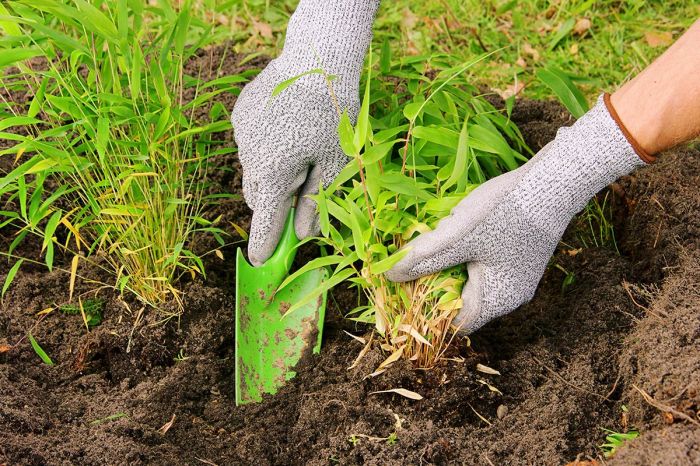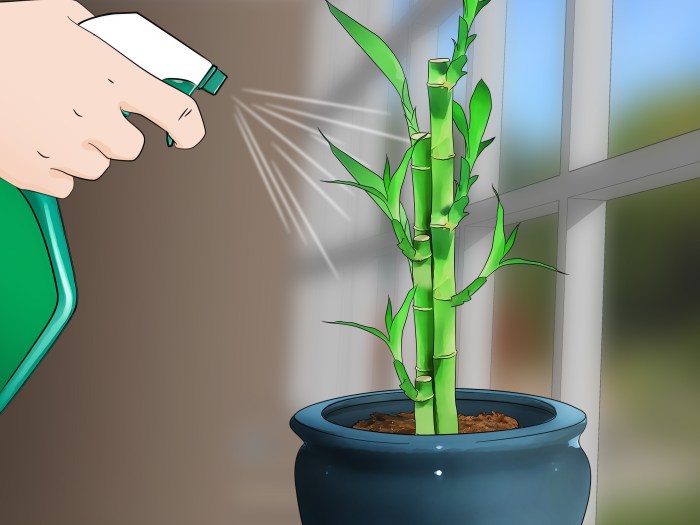How to Plant Bamboo Seeds
Selecting High-Quality Bamboo Seeds
How to plant bamboo seeds – Choosing the right bamboo seeds is crucial for successful cultivation. High-quality seeds significantly increase your chances of germination and healthy plant growth. This section details how to identify ideal seeds and source them responsibly.
Ideal Characteristics of Bamboo Seeds
High-quality bamboo seeds are typically plump, firm, and free from any visible damage, discoloration, or signs of insect infestation. They should have a consistent color, usually a light brown or tan, depending on the species. Avoid seeds that are shriveled, cracked, or have an unusual odor.
Bamboo Species and Climate Suitability
Different bamboo species thrive in varying climates. For instance, Phyllostachys aurea (Golden Bamboo) tolerates a wide range of conditions, while some tropical species require consistently warm temperatures and high humidity. Research the specific climate requirements of your chosen bamboo species before planting to ensure its success.
Sourcing Bamboo Seeds
Reliable sources for bamboo seeds include reputable nurseries, online seed suppliers specializing in bamboo, and even local bamboo growers. When collecting seeds yourself, ensure you’re harvesting from healthy, mature plants and avoid over-harvesting, which can damage the parent plant. Always obtain necessary permissions if collecting seeds from private or protected land.
Preparing for Planting Bamboo Seeds
Proper soil preparation and pre-soaking are key to successful bamboo seed germination. These steps will significantly improve your chances of a healthy and thriving bamboo plant.
Soil Preparation for Bamboo Seed Germination
Bamboo prefers well-drained, slightly acidic soil (pH 6.0-7.0). Amend heavy clay soils with organic matter like compost or peat moss to improve drainage and aeration. For sandy soils, add organic matter to retain moisture. Ensure the soil is loose and easily workable before planting.
Creating a Suitable Planting Environment
Bamboo requires adequate sunlight and drainage. Most bamboo species prefer partial shade, especially during their early growth stages. Ensure the planting area has good drainage to prevent waterlogging, which can lead to root rot. Consider the mature size of your chosen bamboo species when selecting a planting location to avoid overcrowding.
Pre-Soaking Bamboo Seeds
Pre-soaking bamboo seeds helps to soften the hard seed coat, promoting faster and more consistent germination. Several methods exist, each with its own advantages and disadvantages.
| Method | Duration | Benefits |
|---|---|---|
| Water Soaking | 12-24 hours | Simple, readily available |
| Hydrogen Peroxide Soaking (3% solution) | 1-2 hours | Disinfects seeds, potentially boosts germination |
Sowing Bamboo Seeds

Source: bambooplantshq.com
The method of sowing – direct sowing or using seed trays – influences germination rates and seedling management. Careful consideration of planting depth and spacing is crucial for optimal growth.
Planting Technique
Plant bamboo seeds about ½ inch deep and 2-3 inches apart. This spacing allows for adequate room for seedling development before transplanting (if using seed trays). Gently cover the seeds with soil and lightly tamp down to ensure good seed-to-soil contact.
Optimal Planting Arrangement
Imagine a grid pattern with seeds planted at the intersections. This ensures even spacing and maximizes sunlight penetration. This arrangement facilitates air circulation, reducing the risk of fungal diseases. For direct sowing, consider the mature size of the bamboo and adjust spacing accordingly.
Seed Trays vs. Direct Sowing
- Direct Sowing:
- Advantages: Minimizes transplanting shock, establishes plants directly in their final location.
- Disadvantages: Higher risk of seed loss due to environmental factors, less control over seedling development.
- Seed Trays:
- Advantages: Increased control over germination and early growth, allows for easier management of seedlings, reduces transplant shock.
- Disadvantages: Requires extra effort for transplanting, potentially higher initial cost.
Post-Planting Care for Bamboo Seedlings
Consistent watering, pest control, and appropriate sunlight exposure are essential for the survival and healthy growth of young bamboo seedlings.
Watering Schedule
Keep the soil consistently moist but not waterlogged. Water deeply and less frequently rather than shallowly and often. Adjust watering frequency based on weather conditions and soil type. During hot, dry periods, more frequent watering may be necessary.
Protecting Seedlings from Pests and Diseases
Monitor seedlings regularly for signs of pests or diseases. Common pests include aphids and mealybugs. Use insecticidal soap or neem oil to control infestations. Fungal diseases can be prevented by ensuring good drainage and air circulation. Remove and destroy any infected seedlings.
Sunlight Needs During Different Growth Stages

Source: wikihow.com
| Growth Stage | Sunlight Needs |
|---|---|
| Germination | Partial shade to protect delicate seedlings |
| Seedling Stage | Morning sun, afternoon shade |
| Mature Plant | Full sun to partial shade, depending on the species |
Growth and Maintenance of Bamboo Plants
Understanding the growth rate and implementing a proper maintenance plan ensures the long-term health and vigor of your bamboo plants.
Bamboo Growth Rate and Influencing Factors
Bamboo growth rates vary significantly depending on the species, climate, and soil conditions. Some species exhibit rapid growth, increasing several feet in a single growing season. Factors like nutrient availability, water availability, and sunlight influence growth rate. Optimal conditions result in faster growth.
Expected Growth Milestones
Growth milestones vary widely between bamboo species. For example, some clumping bamboos might reach their full height within a few years, while running bamboos may take longer to establish and spread. Refer to specific species information for expected growth timelines.
Maintenance Plan for Established Bamboo Plants
Established bamboo plants benefit from regular fertilization, especially during the active growing season. Use a balanced fertilizer, following package instructions. Pruning helps maintain the shape and size of the plant, removing dead or damaged culms (stems).
Troubleshooting Common Bamboo Growing Issues
Addressing problems promptly can prevent significant damage to your bamboo plants. This section covers common issues and their solutions.
Common Problems and Solutions, How to plant bamboo seeds
Common problems include fungal diseases (often caused by poor drainage), insufficient drainage leading to root rot, and pest infestations. Solutions include improving soil drainage, applying fungicides (if necessary), and implementing pest control measures. Preventative measures, such as proper soil preparation and regular monitoring, are crucial.
Pest Control Methods
- Insecticidal soap for soft-bodied insects.
- Neem oil for a broader range of pests.
- Biological control methods (introducing natural predators).
- Handpicking pests for small infestations.
FAQ Summary: How To Plant Bamboo Seeds
Can I plant bamboo seeds directly outdoors?
While possible, starting seeds indoors in seed trays offers better control over germination and reduces the risk of seed loss. Direct sowing is suitable for warmer climates with established soil conditions.
Successfully planting bamboo seeds involves careful consideration of soil type and moisture levels. Timing is key, and understanding the optimal planting window is crucial for successful germination. This is similar to knowing when to plant other vegetables, such as asparagus, for which you can find helpful information on the ideal planting time at when to plant asparagus seeds.
Returning to bamboo, consistent watering after planting is vital for healthy growth, ensuring the seeds receive adequate hydration for optimal development.
How long does it take for bamboo seeds to germinate?
Germination time varies depending on the species and conditions, but generally ranges from a few weeks to several months. Warm temperatures and consistent moisture are crucial.
What type of fertilizer is best for bamboo?
A balanced, slow-release fertilizer is ideal. Avoid fertilizers high in nitrogen, which can promote excessive leaf growth at the expense of root development.
How do I prevent fungal diseases in bamboo seedlings?
Ensure good drainage to prevent waterlogging. Use sterile soil and seed trays. Consider using a fungicide as a preventative measure, if necessary.




















